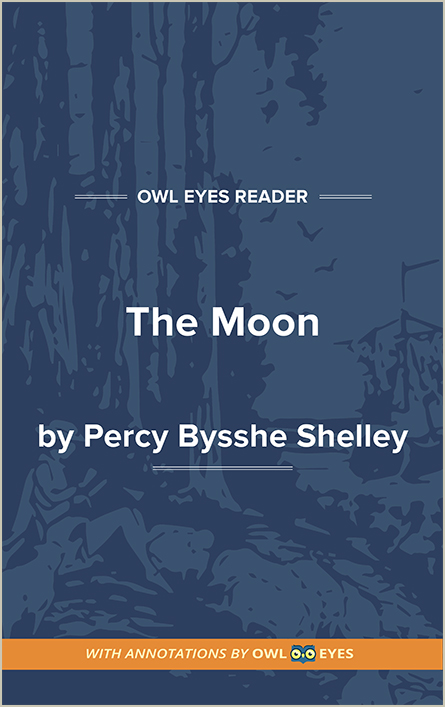- Annotated Full Text
- Literary Period: Romantic
- Publication Date: 1822
- Flesch-Kincaid Level: 9
- Approx. Reading Time: 0 minutes
The Moon
Percy Shelley’s “The Moon” is one of many poetic sketches and fragments that the poet’s wife, Mary Wollstonecraft Shelley, published after his death in 1822. The second stanza of “The Moon” is often published alone under the title “To the Moon.” It is thus difficult to say exactly how Shelley would have intended these lines to be presented, or whether they form a completed draft. The poem serves as a lyrical description of the rising moon and uses a rotating series of personifying conceits. In the first stanza, the moon is “like a dying lady lean and pale,” who wanders alone across the sky. The moon then transforms into the stuff of thought, the product of “the feeble wanderings of her fading brain.” As the poem progresses, the moon takes on more roles: the weary traveller, spectator to the earth, the dissatisfied eye searching for beauty. Like the moon it describes, the poem never quite settles into an identity or arrives anywhere. This likely reveals “The Moon” as the product of a restless mind searching for graspable human truths in the face of the cosmos. The search never ends; nor does it begin, as reflected by the poem’s cryptic opening word: “And.”
- Annotated Full Text
- Literary Period: Romantic
- Publication Date: 1822
- Flesch-Kincaid Level: 9
- Approx. Reading Time: 0 minutes

